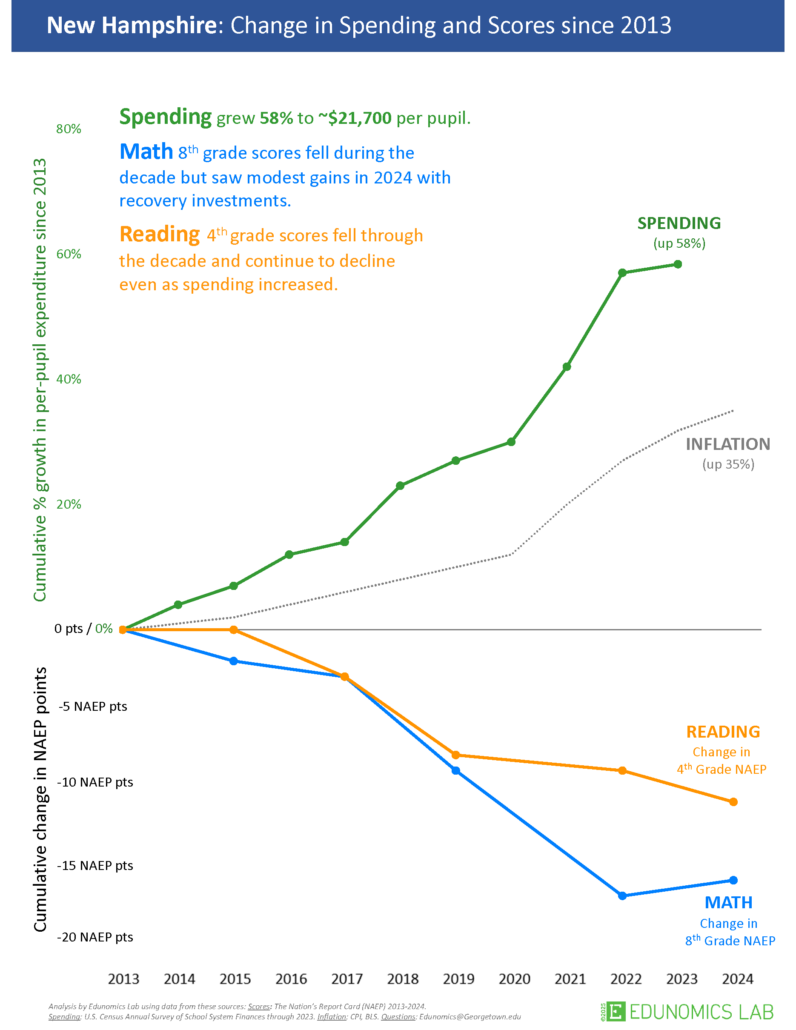In the three previous columns in this series (here, here, and here), we’ve reviewed all sorts of evidence showing that dumping more tax dollars into government schools is not a recipe for better educational outcomes.
Instead, our taxes mostly go to hiring more bureaucrats.
Meanwhile, student performance is flat at best.
Or, thanks to the greedy actions of teacher unions during the pandemic, student performance is falling.
Let’s look at the latest data.
The Wall Street Journal editorialized on this topic late last month. Here are some depressing excerpts.
Talk about throwing good money after bad. Washington spent $190 billion to make up for the damage from the Covid school shutdowns. What did it get students and taxpayers? Worse academic performance. …Fourth and eighth grade reading scores declined by two points on average since 2022—roughly as much as they did between 2019 and 2022. Some 33% of eighth graders scored below “basic” on the reading exam—a record low. …Pouring more money into the public school system clearly isn’t helping. On average, public school districts nationwide spent $15,825 per student in fiscal 2023 compared to $10,724 a decade earlier, according to the Census Bureau.
Now let’s look at New Hampshire for an example of what’s happening on the state level.
The Josiah Bartlett Center for Public Policy has an excellent new report about education trends in the Granite State.
Here are some highlights, though lowlights might be a better word.
From local elections to legislative debates to legal challenges, discussion of public education in New Hampshire has been dominated by two persistent myths. The first is that more spending is the primary means of producing better educational outcomes. The second is that our educational outcomes are stunted because funding for K-12 public schools has “been slashed…” The data show clearly that New Hampshire, along with the rest of the United States, has made the critical error of equating spending with investment. …Spending more money on fewer students is exactly what was supposed to lead to higher educational outcomes. Parents have been told for decades that schools could offer higher quality services if only they had the resources to hire more staff and reduce class sizes. In New Hampshire, those two input goals have been achieved. With rising revenues and declining enrollments, public school districts have hired thousands of additional staff and cut class sizes. …Voters are often misled into thinking that additional spending by itself is the best way to improve student outcomes. But that is demonstrably untrue.
How do they know it is untrue?
This chart tells you everything you need to know.

More spending and worse results.
This is the main argument for school choice.
Such dismal results would be highly unlikely if there was competitive pressure on schools. If you don’t believe me, look at this evidence, this evidence, and this evidence.
P.S. Needless to say, the Department of Education hurts rather than helps.
———
Image credit: NEC Corporation of America | CC BY 2.0.




